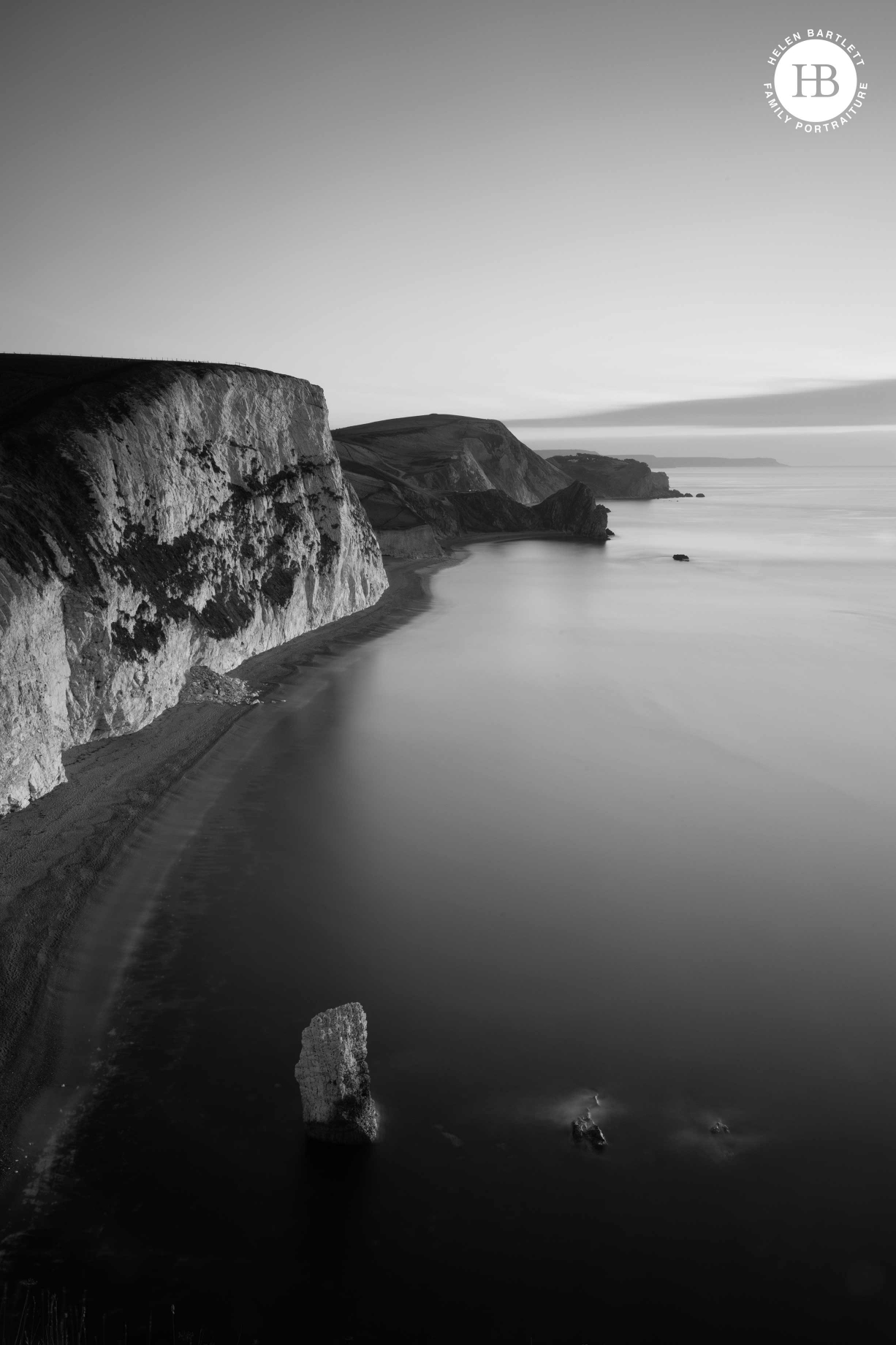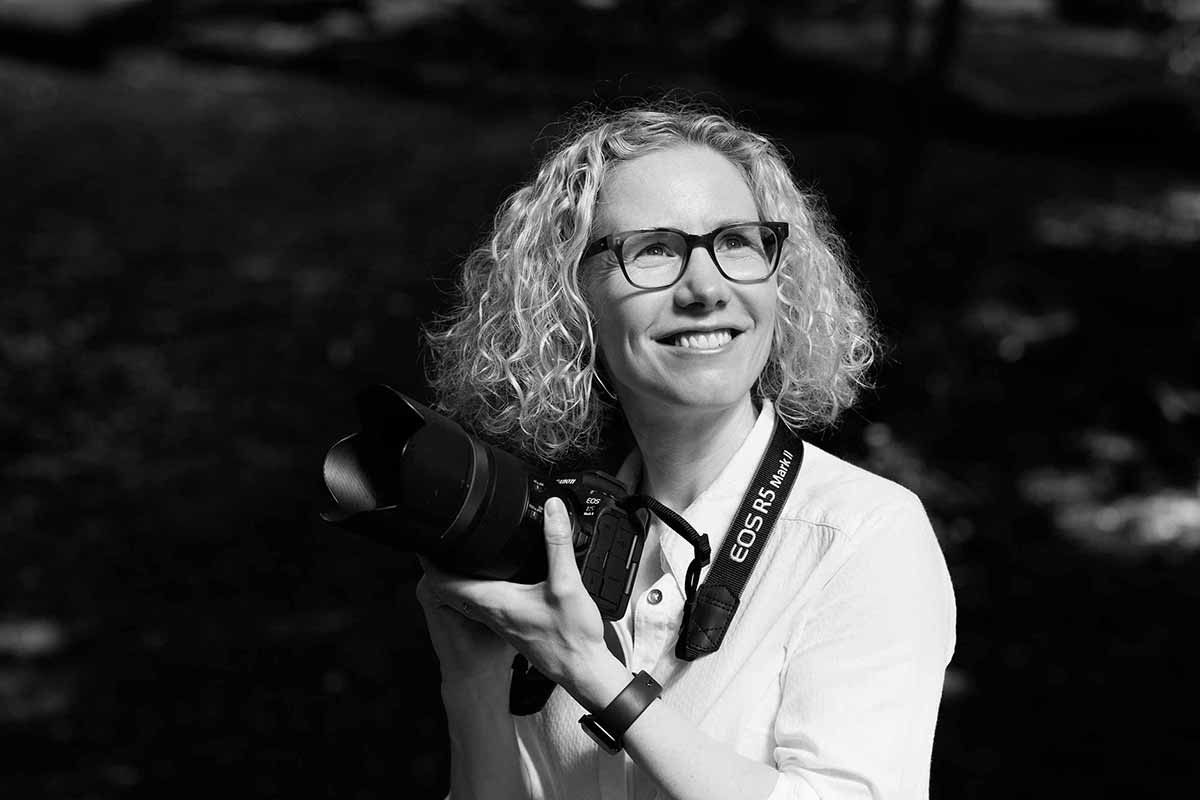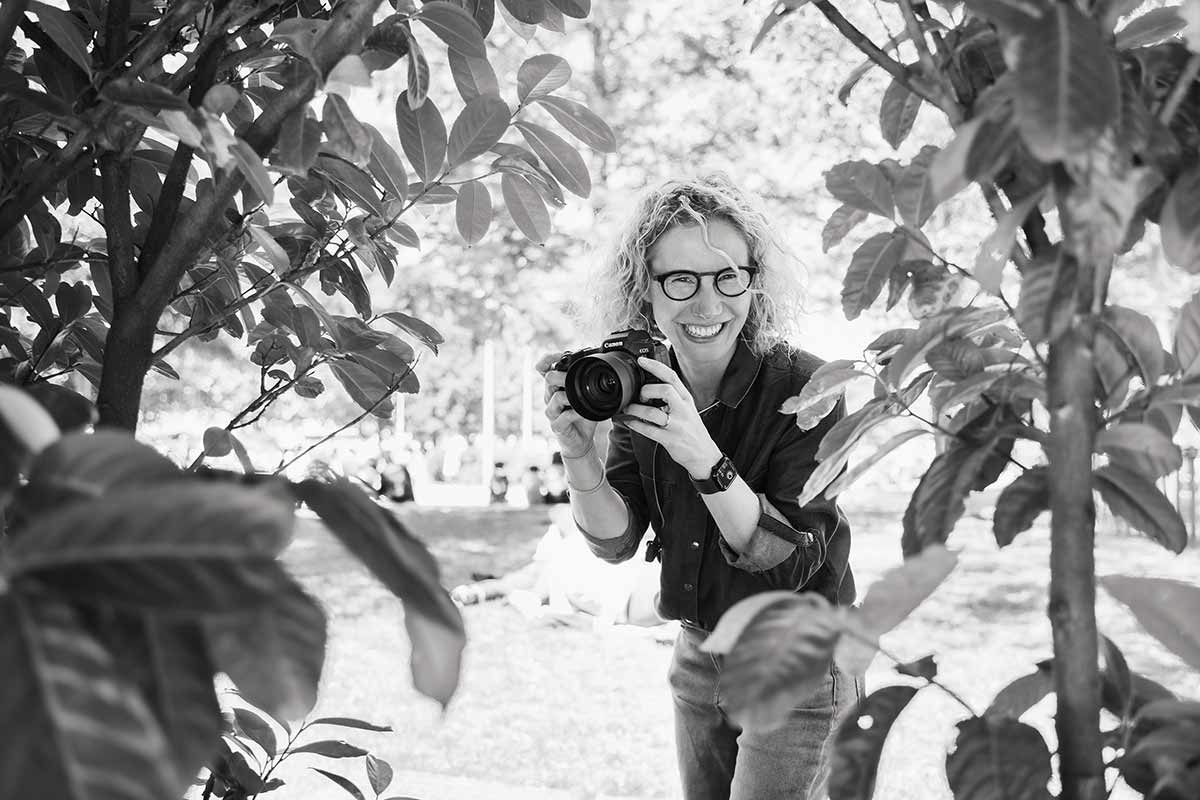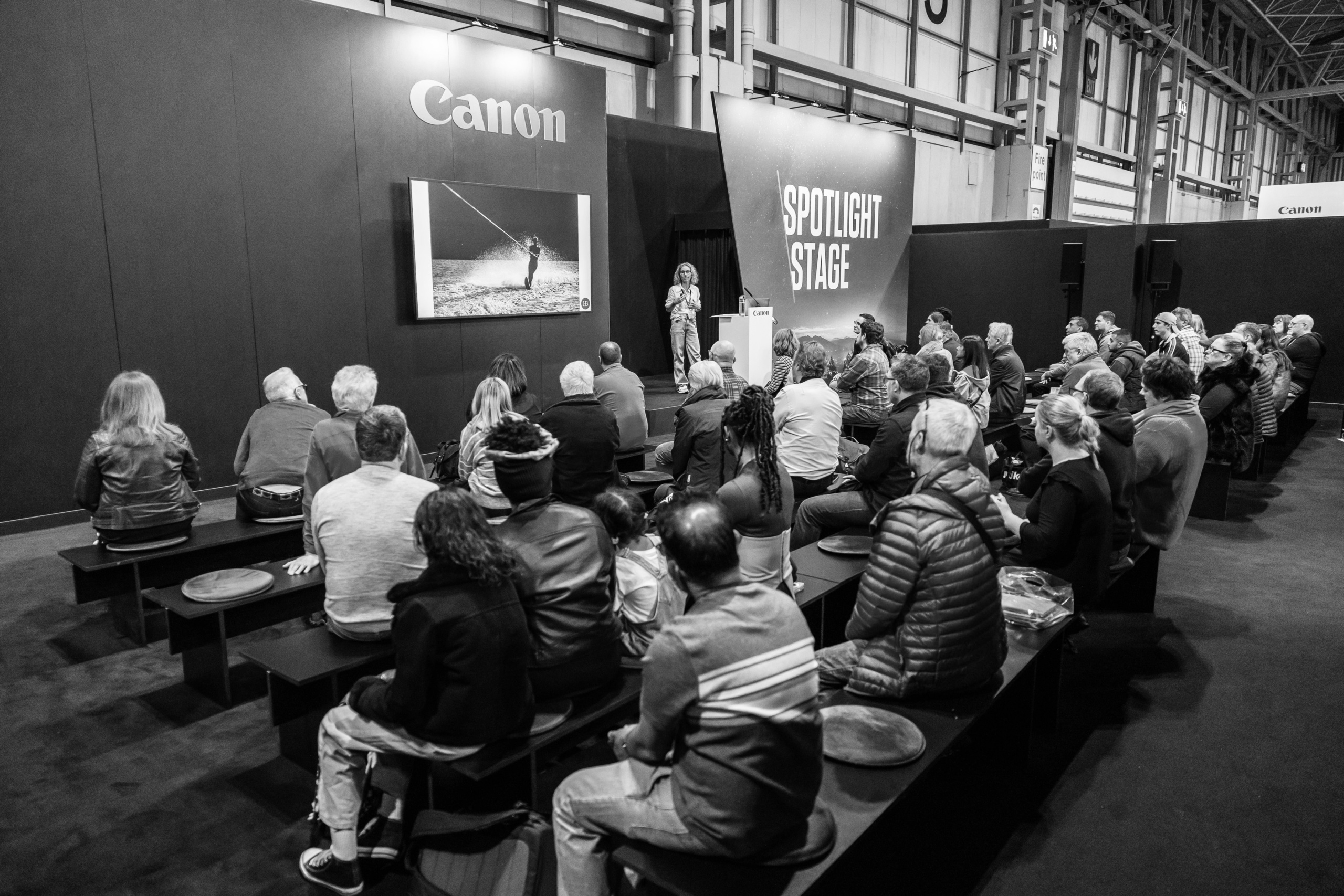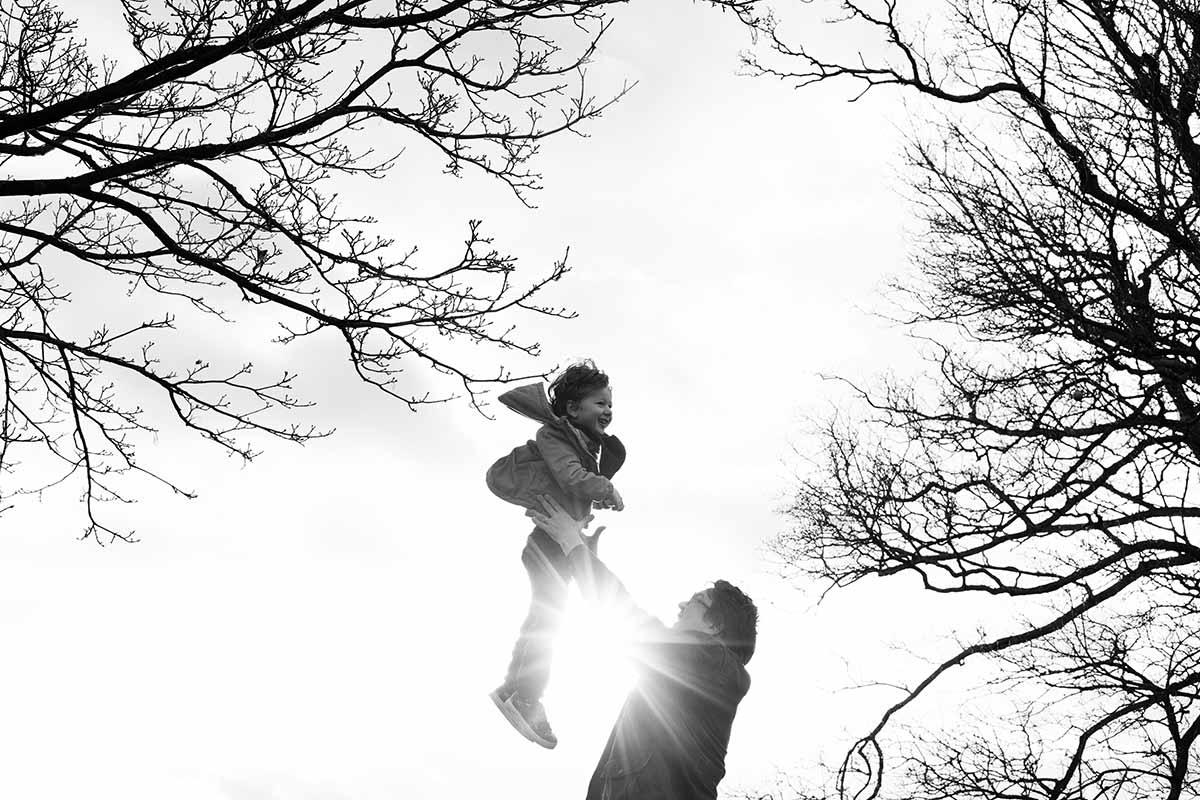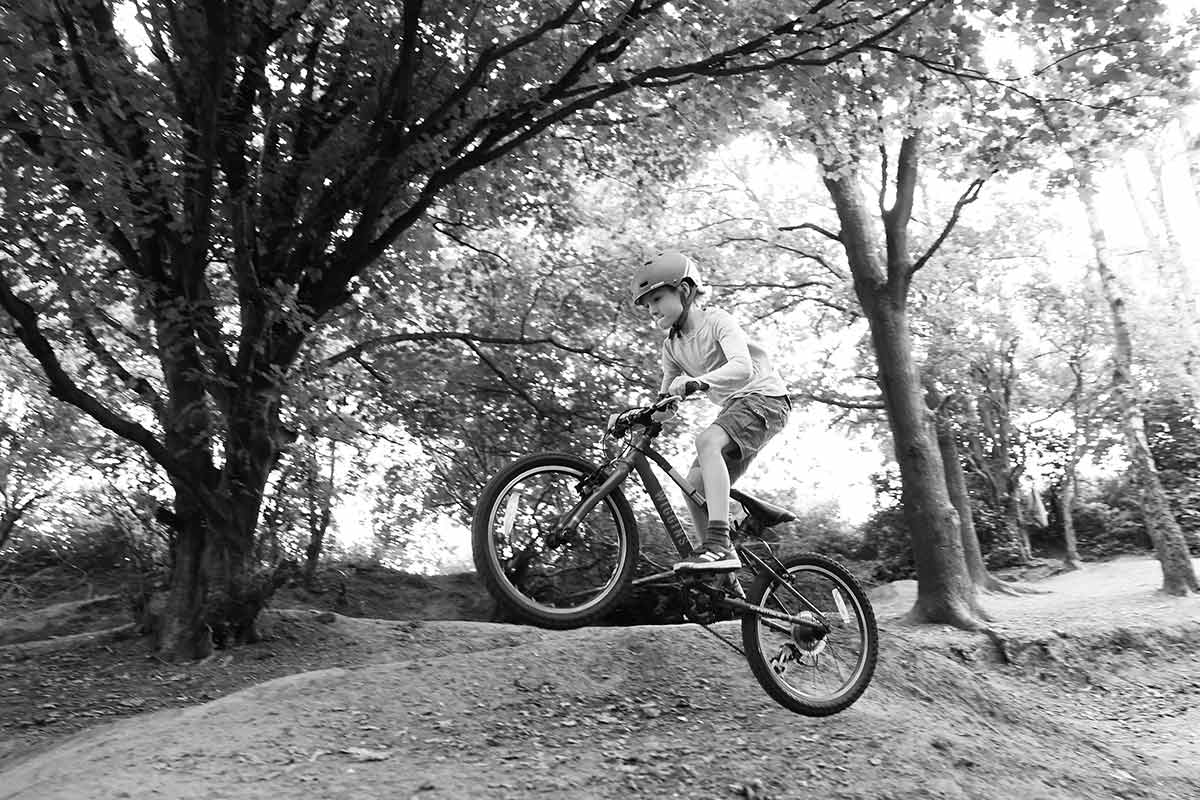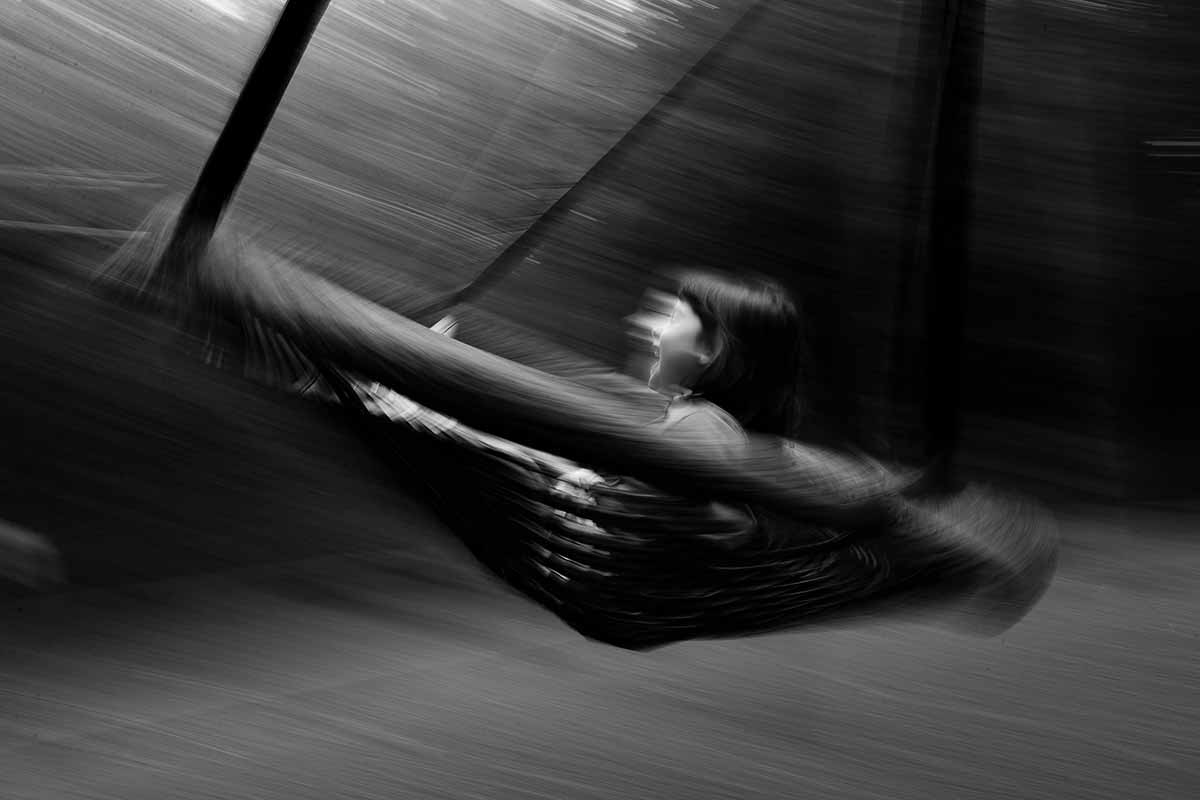Canon Ambassador Job Swap
Shooting Landscapes to Improve Family Portrait Photography
Last week I spent a day with some of my fellow Canon Ambassadors for the first Canon Ambassador Job Swap, a project to share ideas and techniques between the different photographic genres. Myself, Eddie Keogh, Marc Aspland and Sanjay Jogia travelled down to Dorset to learn about landscape photography from David Noton, and to discover some new techniques that we can apply to our own work.
The idea behind the Job Swap is to learn from our fellow professionals so that we can improve our work and, most importantly, share tips with the wider photography world. Canon are dedicated to helping photographers improve their work and this is an interesting new way to help photographers of every level to develop their craft. David shared tips on the day through Canon’s Instagram Stories and Canon will be sharing our thoughts in due course.
Later in the year I hope to host my own Job Swap and have some of my fellow Canon ambassadors join me for a family photo shoot to see what insights I can offer from my own work.
David Noton is one of the best landscape photographers in the world and so it was a huge privilege to see him work and to get tuition on how he plans and executes his photography. As Canon Ambassadors we are all experts in our chosen fields, but each genre has so much that is unique about it, so many elements that are different that there is so much to learn from one another. Over the years we have all built up huge amounts of experience that it is a joy to share.
As we discussed in Dorset, the day we stop learning, stop striving to take better pictures and improve our work is the day we should hang up our cameras. I love learning and it’s the perfect time of year – January a time of new beginnings – to add some new tools to skill set.
We had twenty-four hours together but at this time of year that didn’t give us that much time for photography. We had two short shooting sessions with sunset so early and sunrise relatively late but, as is so often the case, a lot was learnt while chatting in the car between locations and over a meal in the evening. I’m so excited to put some of the new ideas to work on my upcoming photo shoots.
How did the Canon Ambassador Job Swap work?
On arrival in Dorset for the Canon Ambassador’s Job Swap David gave us a welcome briefing. We looked at a map of the area and discussed sunset and sunrise, the direction of the light and also the positioning of the milky way. The plan had been to do a night shoot but sadly the weather was against us and there were no stars to be seen.
It was fascinating to see how David plans his shoots for different times of year depending on the light and how January is a particularly good time for sunrise and sunset at the coast is illuminated in the low winter light. For the milky way we can return in the summer when it will be in a better position (and hopefully we wont have a cloudy night), I’m already planning a trip to Dorset with my husband to have a go at that in the summer now David has shared his techniques with us.
The group then headed out to West Bay on the Jurassic Coast where David introduced those of us who were new to them, to the wonders of the Lee Filters system – polarisers, ND grads, and the big stopper were explained and demonstrated. We took pictures and discussed photography until dark.
The following morning was a dawn shoot and, armed with head torches and flapjack,s we ventured forth to Bat’s Head on the Dorset coast. There, as the sun came up, we had different options for shots looking along the coast in either direction as the cliffs were illuminated by the early morning light. It was beautiful to be in the landscape and enjoying the majesty of nature, so different to my usual start to the day reading the news on my iPad while drinking copious quantities of coffee or heading across London to get to my clients for an early start on a family photography session. By lunchtime we were all heading back home and I was asleep on the train, a brilliant and jam packed few hours.
What did I learn from the first Canon Ambassadors Job Swap?
I’ve always felt one of the great benefits of shooting landscapes is in slowing down. My work is usually a frenzy of activity – yes there can be moments of calm and stillness (and also cake) during my photo shoots but from the moment I arrive to the moment I leave I’m constantly searching for pictures, moving around and reacting to what is happening in front of me. I’m also spending a lot of time interacting with my subjects, entertaining the children, chatting to the parents, making sure everyone is relaxed and enjoying themselves.
In the landscape there’s nobody to hunt for the Gruffalo with or read a story to, in the landscape we are reacting to the light and the weather and the world around us. By putting a camera on a tripod we take more time to consciously consider each element of the photograph – where the subject meets the edges of the frame? what is happening in the corners? should an piece of the landscape be included or cropped out? It’s a slower process as we have the benefit of time (not always of course, sometimes the changing weather calls for split second decisions) but more often than not there is time to contemplate the detail without a wriggling toddler escaping from the group shot. I’ve found, over the years, that this process is hugely beneficial to my portrait work, by spending time shooting landscapes it’s as if my brain has been reminded to look closely at the corners, to double check my horizons are straight and to watch for distracting elements in a more focused way when I’m working fast on family portraits.
This idea of planning a shot and waiting for the light had a different element that I hadn’t thought about before. I’d long considered the benefit of using a tripod for landscape photography to be beneficial at the time of taking the picture but it was only when David stopped the car during our drive to gather everyone for a quick chat that I realised the other aspect of waiting for the light and the weather.
Looking down over Chesil Beach David explained how he would find a location and then spend time thinking about when it would be best to photograph it. He would look at light and season and at time of day, to determine when would be best to return and take his picture. Maybe it was a shot that would be perfect on a winter morning, or a summer evening or maybe it makes sense to photograph both for different looks. David’s knowledge of weather and light was inspirational.
I hadn’t really thought that landscape photographers would have an internal database of locations that they could dip into at different times of year to ensure great photos and it remined me of the concept of a database of inspirational images that I definitely have for my own work. My inspiration comes from so many things – books and films, exhibitions and Instagram, I’m always harvesting ideas and techniques that I can use at a later date when an opportunity presents itself. Most of this is subconscious, ideas that are squirreled away in my brain for future development. With family photography I never know when I might be photographing someone doing something out of the ordinary and having this stock of ideas to make my own is helpful. It’s a fascinating concept this idea of stocking up images yet to be taken and I found it fascinating to discuss it with Marc and find that he felt the same way.
As someone who tends to shoot landscapes on a wide-angle lens I was interested to see how David utilises a huge range of equipment in his pictures, swapping from a wide to a long lens to get the best shot. I did end up sticking to my usual wider end of the focal length scale but seeing the work of the other ambassadors did make me think I should try some other focal lengths at my portrait shoots, just to add some variety, certainly the Canon EF 400mm f2.8L IS II USM that Eddie was using on the beach looked like a lot of fun.
Slowing down and using a tripod also meant that we had the opportunity to ask our fellow Canon Ambassadors for opinions and tips as we were working. Sanjay was incredibly kind explaining some of the finer points of working with a 10-stop ND grad as I took my favourite picture of the day which I’ve shared here on the blog. His technique of working out the change in exposure in terms of the number of clicks is inspired and also, is something I will remember for future sessions.
Discovering the Canon Connect App
Shooting in a situation like the Canon Ambassador Job swap is also an incredible opportunity to try new things. I planned to shoot with the EOS R and the night before I travelled to Dorset I realised that I didn’t have a cable release that would fit the camera.
On arrival Frankie from Canon UK showed me how to set up the Canon Connect App to work as an electronic cable release – it’s amazing. I’d not used the Canon Connect App before but I’m already thinking about how I can use it in the future. From my phone I can see the image in live view, I can adjust settings such as aperture, shutter speed and ISO and I can press the shutter. On a landscape trip using a cable release or an app like Canon Connect is essential for two reasons, firstly, pressing the shutter can cause camera shake with long exposures and secondly, if your tripod legs are in the sea you can stand on dry land and take pictures without getting wet feet (although I admit I do keep hold of the camera strap in these situations as I’ve seen tripods being knocked over by unexpectedly big waves in the past).
The Canon Connect App is definitely something I am going to experiment with using on some of my shoots to operate a remote camera, watch this space for the results later in the year.
One of the things that is so different from family portrait photography to landscape photography is the number of target images. From a family portrait shoot over about four hours I’m typically expecting to produce around seventy good, interesting and unique images. When you are out taking landscapes you are looking for one. Some days might result in more, others in none as so much is down to the light. David and I discussed this with Marc and Eddie on the drive to one of the locations; on a portrait shoot or during a sporting event, great light is a bonus while on a landscape shoot it’s a necessity and sometimes it just isn’t there and the only thing to do is come back another day as I plan to do for a night shoot.
Shooting landscape in black and white
As many of you know, I shoot all my work in black and white and that is the same for landscapes as portraits. I love the timeless nature of black and white and the way it abstracts a scene – asking us to look closer, to examine and to imagine. It has a magical quality that always appeals.
I found that using the EOS R with it’s electronic viewfinder set to black and white really helped with finding a good landscape that would work in monochrome format
I also found an unexpected bonus of shooting with the EOS R was the focus peaking feature. I hadn’t really thought about is as it’s not something I’ve used extensively before. In the past when shooting landscapes I’ve often found myself double checking focus between each click of the shutter but having the focus peaking markers on the back of the camera meant I could check at a glance and be sure it was where I needed it to be. It’s a small thing but one that I found incredibly helpful. I’m already wondering how it would work using a tilt-shift lens and the creative possibilities that might open up making the process of getting the focus correct with the movements of the lens much quicker and easier.
My favourite shot from the Canon Ambassador Job Swap
My favourite shot of the day from the dawn shoot at Bat’s Head is the image at the top of this blog post – a view looking down from the cliffs towards Durdle Door.
I feel this shot has really worked because of the use of black and white which gives a wonderful mood and feeling of mystery to the image.
I’m always looking for mood and emotion in my work, from pictures of children to my occasional forays into landscape or street photography, I want an image to make the viewer feel something, to make them want to know more.
I feel that this image has captured the calmness of the sunrise, the time of infinite possibilities before the world wakes up. I used a ten stop neutral density ‘big stopper’ filter to slow the shutter speed right down to three minutes so the sea becomes a tranquil blur but with the shadows of currents and eddies visible in places to give a feeling of movement below the surface and other worlds in the deep.
I love how the sea stacks in the foreground give the picture focus and the three areas of rock seem to balance the cliffs beyond, a pattern that continues into the sky with the strip of cloud seeming to mimic the shape of the headland below.
Interestingly it’s the details of the small rock fall that I find most fascinating. It’s that which gives this image a place within in the passing years. The rock fall was probably not there a year ago, in a year’s time they will look very different. It’s shows the passing of time in a landscape that seems almost otherworldly in its stillness and it reminds us of the ever-changing nature of our coastlines.
It’s been such a pleasure and a privilege to be involved with the first of Canon’s Ambassador Job swaps and I’m already looking forward to the next one. Huge thanks go to Canon UK for making it happen, to David Noton for his wisdom and generosity sharing his skills and experience with us and to my fellow attendees Marc, Eddie and Sanjay for their tips, insights and companionship.
I know I’ve learnt a lot and will be implementing some of the ideas into my work in the near future. I’ll aim to revisit this blog post later in the year and discuss how those changes have played out. In the meantime, do keep an eye out on the Canon Pro Blog where I’m sure there will be a write up of our adventures soon.
For more information about my Family Portrait Photography do click through to the main website.
